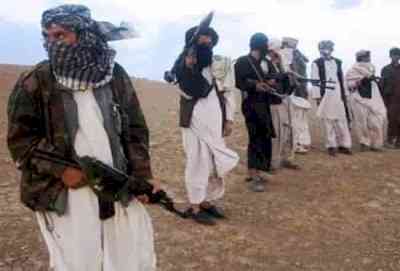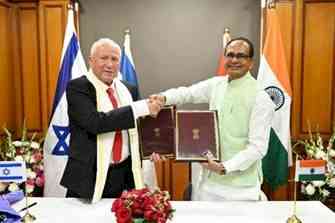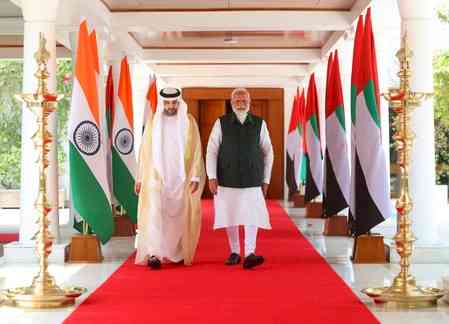Afghanistan's $3tn worth of natural assets in Taliban's control

By Sanjeev Sharma
New Delhi, Aug 20 (IANS) China, already Afghanistan's largest foreign investor, is seen as likely to lead the race to help the country build an efficient mining system to meet its insatiable needs for minerals.
A follow-up report by the Afghan government in 2017 estimated that Kabul's new mineral wealth may be as high as $3 trillion, including fossil fuels.
To date, the Taliban have profited from the opium and heroin trade. Now the militant group effectively rules a country with valuable resources that China needs to grow its economy, DW reported.
In 2010, a report by US military experts and geologists estimated that Afghanistan, one of the world's poorest countries, was sitting on nearly $1 trillion in mineral wealth, thanks to huge iron, copper, lithium, cobalt and rare-earth deposits.
Lithium, which is used in batteries for electric cars, smartphones and laptops, is facing unprecedented demand, with annual growth of 20 per cent compared to just 5-6 per cent a few years ago. The Pentagon memo called Afghanistan the Saudi Arabia of lithium and projected that the country's lithium deposits could equal Bolivia's — one of the world's largest.
Copper, too, is benefiting from the post-COVID global economic recovery — up 43 per cent over the past year. More than a quarter of Afghanistan's future mineral wealth could be realised by expanding copper mining activities.
While the West has threatened not to work with the Taliban after it effectively seized control of Kabul over the weekend, China, Russia and Pakistan are lining up to do business with the Taliban.
As the manufacturer of almost half of the world's industrial goods, China is stoking much of the global demand for commodities. Beijing — already Afghanistan's largest foreign investor — is seen as likely to lead the race to help the country build an efficient mining system to meet its insatiable needs for minerals.
"Taliban control comes at a time when there is a supply crunch for these minerals for the foreseeable future and China needs them," Michael Tanchum, a senior fellow at the Austrian Institute for European and Security Policy, told DW.
"China is already in position in Afghanistan to mine these minerals."
Chinese state-run media, meanwhile, described how Afghanistan can now benefit from the country's massive Belt and Road Initiative (BRI) — Beijing's controversial infrastructure plan to build road, rail and sea routes through Asia to Europe.
One of the Asian powerhouse's mining giants, the Metallurgical Corporation of China (MCC), already has a 30-year lease to mine copper in Afghanistan's barren Logar province, the report said.
Afghanistan's neighbour Pakistan is also set to benefit from Afghanistan's minerals wealth. The Islamabad government, which supported the Taliban's first takeover of Afghanistan in 1996, has maintained ties with the group and has been accused by the US of harbouring Taliban militants.
Pakistan is also set to be a major beneficiary of China's infrastructure investment — often dubbed the New Silk Road.
"Pakistan has a vested interest as the materials could potentially be transported along the commercial transit route from Pakistan to China," Tanchum told DW, adding that a deal with the Taliban would give Islamabad the incentive to support a stable security environment in the region.
The Afghan ministry of mines and petroleum has too estimated the mines and natural resources of Afghanistan worth $3 trillion. Officials in the ministry said that they have found 1,400 spots possessing various types of natural resources such as natural gas, coal, salt, uranium, copper, gold, and silver, Afghan media reports said.
Natural gas is mostly found in the northern provinces of Balkh, Shebirghan, and Saripol which has been estimated from 100 to 500 billion cubic meters. In the latest investigation conducted by NASA, there are over one hundred zones of oil and gas in Afghanistan.
Media reports said most of the investigations regarding oil-rich regions have been conducted in five zones of Afghanistan namely two of them in the north of Amo River, one in Helmand province, one in Herat, and one in Kato district of Paktika province.
Meanwhile, in the latest report of British Petroleum, the capacity of Afghanistan's oil has been estimated to be from 250 to 300 barrels per day which enables Afghanistan to earn nine billion and one hundred million dollars annually from the resource.
Officials in De Afghanistan Bank (central bank) say that Afghanistan needs from six up to seven billion dollars for its economic growth for which the natural resources are considered to be a good source of economic growth.
In 2012, 150 thousand barrels of oil were to be excavated from the wells which would then be increased to 300 thousand barrels in 2013.
Meanwhile, oil resources have also been found in Herat, Shiberghan, Maimana, Kunduz, Taloqan, Saripol, and Helmand provinces.
The coal resources of Afghanistan are estimated to be from 100 to 400 million tonnes. Coal resources have been confirmed to be in Baghlan province (Karkar mine), Kunduz province (Ash Pushta), Herat province (Karukh), and Balkh province (Dara-e-sof).
Gold mines have been excavated and used traditionally (washing gold). The method has been used in Darwaz district of Badakhshan province, Qala-e-Zal district, and the ravines of Raq and Dadung of Kunduz province. The gold mines have also been confirmed in Badakhshan, Kandahar, and Zabul provinces.
(Sanjeev Sharma can be reached at [email protected])


 IANS
IANS 








